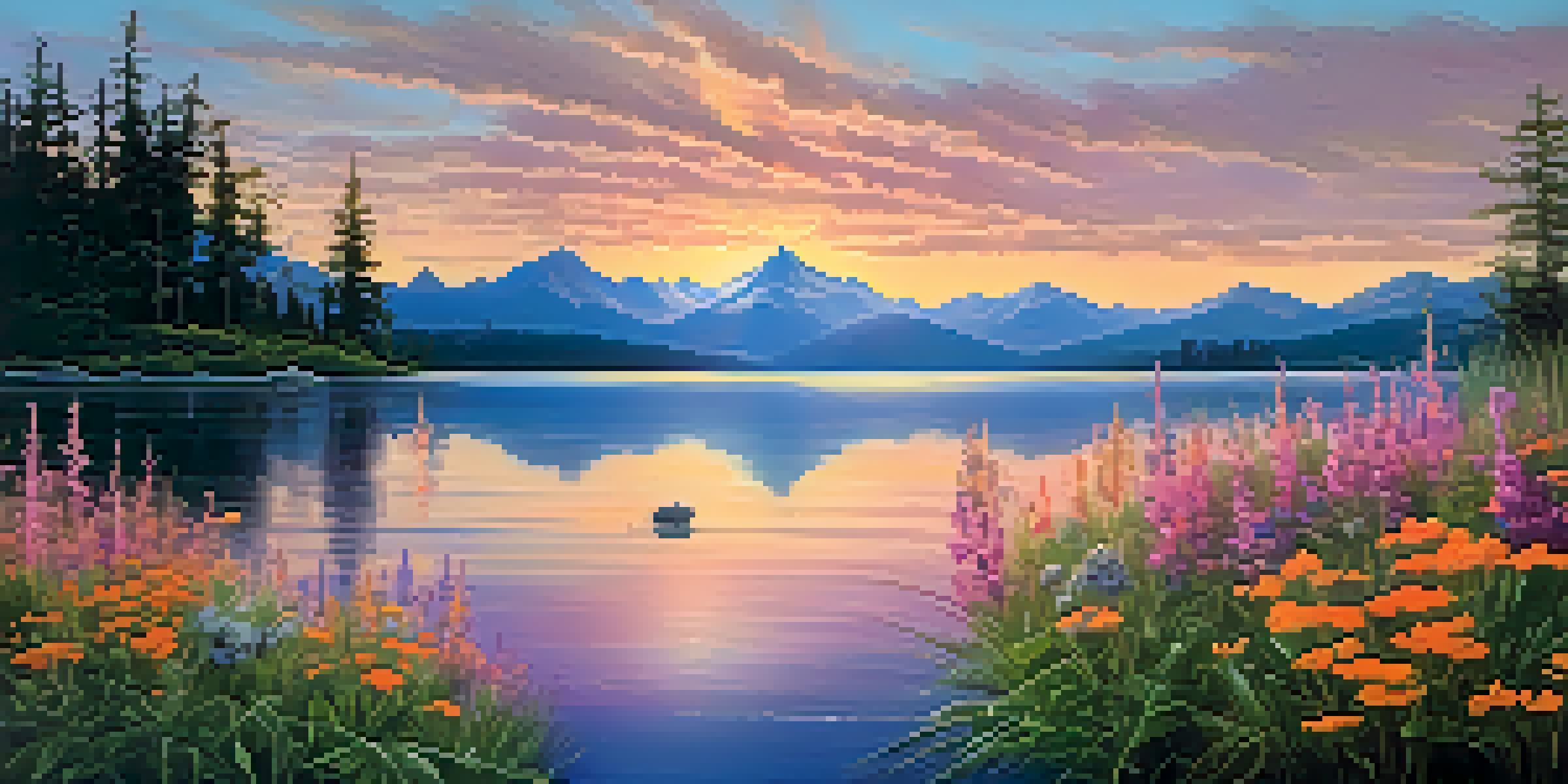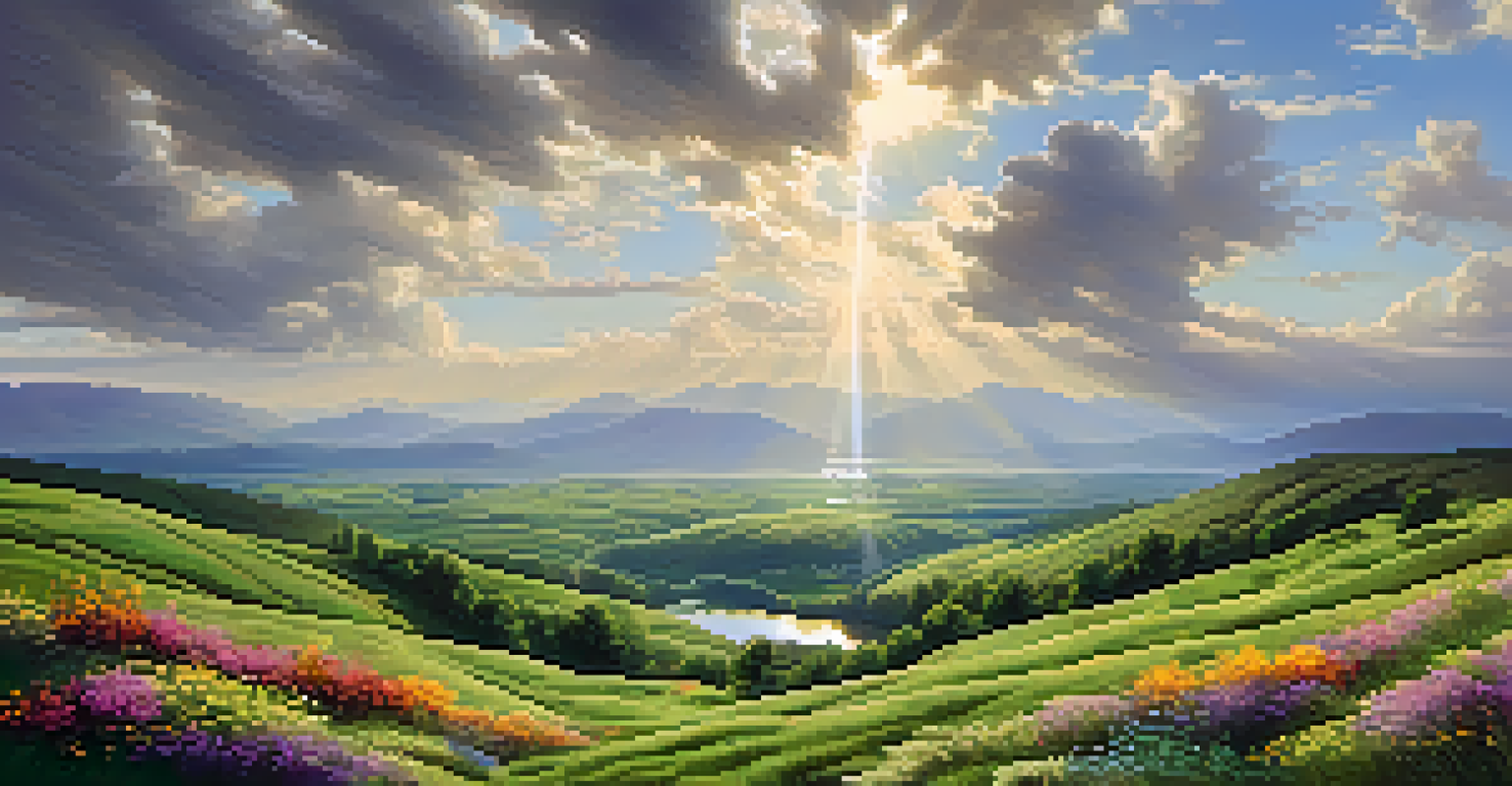Capturing Landscapes: Techniques for Stunning Travel Photos

Understanding the Basics of Landscape Photography
Landscape photography is all about capturing the beauty of nature, but it goes beyond just pointing and shooting. Understanding the fundamentals, like composition and lighting, can greatly enhance your photos. Remember, the aim is to convey the mood and essence of a place through your lens.
Photography is the story I fail to put into words.
Consider the rule of thirds, where you divide your image into nine equal parts and place key elements along those lines or at their intersections. This simple technique helps create a more balanced and engaging composition. Additionally, natural light plays a crucial role, so aim to shoot during the golden hours—shortly after sunrise or before sunset—for that warm, soft glow.
Lastly, don’t shy away from experimenting with different perspectives. Sometimes, a lower angle or an unexpected viewpoint can transform the ordinary into the extraordinary. The more you explore, the more you'll learn about what works best for you.
Choosing the Right Equipment for Your Shots
While it’s true that great photos can be taken with any camera, having the right equipment can make a significant difference. A DSLR or mirrorless camera provides more control over settings like aperture and shutter speed, which are essential for landscape photography. Pair it with a sturdy tripod to stabilize your shots, especially in low light conditions.

Lenses also play a pivotal role; wide-angle lenses are fantastic for capturing expansive landscapes, while telephoto lenses can help you zoom in on specific details. Don't forget to consider filters, such as polarizing filters, which can enhance colors and reduce glare, making your images pop.
Master Composition for Stunning Photos
Utilizing techniques like the rule of thirds and leading lines can significantly enhance the visual appeal of your landscape photography.
However, remember that your creativity and vision are what truly matter. Even with basic equipment, you can capture stunning landscapes as long as you understand how to use what you have effectively. It’s about working within your means and making the most of your surroundings.
Mastering Composition Techniques for Impact
Composition is the backbone of any great photograph. Beyond the rule of thirds, techniques like leading lines can guide the viewer’s eye toward the focal point of your image. Think of paths, rivers, or fences that naturally draw the gaze into the frame, creating a sense of depth and perspective.
The best camera is the one you have with you.
Another powerful technique is framing, which involves using elements in your environment to frame your subject. This could be overhanging branches or rock formations that create a natural border around your scene. It adds layers to your photo and can make your subject feel more prominent.
Lastly, consider negative space—the area around your subject. Sometimes, less is more, and leaving ample space can emphasize your main subject while evoking a sense of tranquility. Experiment with these techniques, and you’ll soon notice how they can elevate your landscape photography.
Utilizing Natural Light for Stunning Effects
Natural light can completely transform your landscape photos, providing mood and atmosphere. As mentioned before, golden hour is a photographer's dream, but there’s also beauty in shooting during overcast days. Cloudy skies can diffuse sunlight, softening shadows and creating a gentle, even light that is often flattering for landscapes.
Pay attention to how the light interacts with your surroundings. Early morning mist or late afternoon sunbeams breaking through clouds can add drama and intrigue to your shots. Even shadows cast by trees or mountains can create interesting textures and patterns.
Embrace Natural Light's Magic
Shooting during golden hours or overcast days can dramatically influence the mood and atmosphere of your landscape images.
Moreover, don’t forget to experiment with backlighting. Shooting directly into the sun can create silhouettes or stunning flares that add a magical touch. Just remember to keep an eye on your exposure settings to avoid losing detail in your highlights.
Incorporating Foreground Elements for Depth
Including foreground elements in your landscape photos can create a sense of depth and dimension. Think of using rocks, flowers, or even people to add context to your images. This technique not only guides the viewer's eye but also provides a more immersive experience.
Try to position these elements strategically within your composition, ensuring they complement rather than distract from the main subject. A vibrant flower in the foreground can contrast beautifully with a mountain range in the background, creating a balanced and engaging image.
Additionally, varying your focal points can help to draw attention to different aspects of a scene. This will encourage viewers to explore your photo, discovering new details each time they look at it.
Post-Processing Techniques to Enhance Your Photos
Post-processing is an essential step in modern photography that can elevate your landscape images. Software like Adobe Lightroom or Photoshop allows you to adjust exposure, contrast, and saturation, bringing your photos to life. It’s like adding the final touches to a painting, enhancing the colors and details without overdoing it.
However, it's important to approach editing with a light hand. The goal is to enhance the natural beauty of your landscapes, not to create an entirely new scene. Subtle adjustments can make a huge difference, such as correcting the white balance or sharpening the image to bring out fine details.
Tell Stories with Your Images
Incorporating elements like people or weather conditions can help convey the narrative behind your landscape photos, making them more relatable.
Don’t be afraid to experiment with presets or filters, but always stay true to the essence of the scene you captured. The right editing can make your images resonate more with viewers, evoking the same emotions you felt while photographing.
Telling a Story Through Your Landscape Photos
Every landscape has a story to tell, and as a photographer, it’s your job to convey that narrative through your images. Think about what you want to express—whether it’s the grandeur of a mountain range or the tranquility of a serene lake. Your photos should evoke emotions and provoke thoughts in those who view them.
Consider the elements within your frame that can help tell this story. Including people, animals, or weather conditions can add context and make the scene more relatable. A lone hiker on a mountain trail, for example, can illustrate the scale and majesty of the landscape.

Lastly, don't shy away from sharing the backstory of your adventures. Pairing your images with anecdotes can create a deeper connection with your audience, allowing them to experience the journey alongside you. Storytelling is a powerful tool in photography, one that can turn a simple image into a lasting memory.